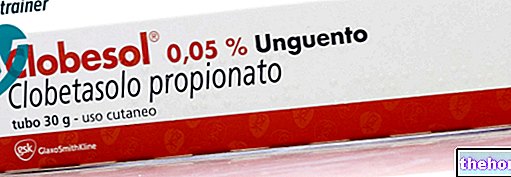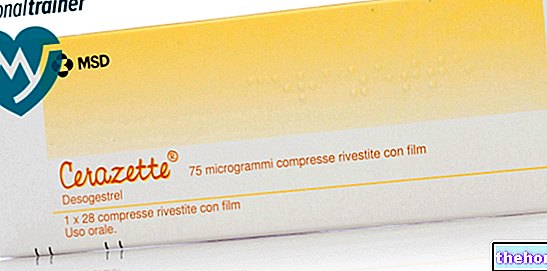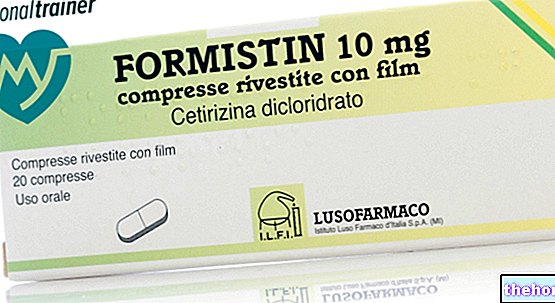Active ingredients: Buserelin
SUPREFACT 0.1 mg / actuation nasal spray, solution
Suprefact package inserts are available for pack sizes:- SUPREFACT 0.1 mg / actuation nasal spray, solution
- SUPREFACT 6.3 mg prolonged release implant
Indications Why is Suprefact used? What is it for?
Suprefact Nasal Spray contains a medicine called buserelin.
Buserelin is similar to a hormone normally released by the brain. Buserelin belongs to a group of medicines called 'luteinizing hormone-releasing hormone analogues' (LHRH analogues).
What is the mechanism of operation of Suprefact Nasal Spray
Buserelin works by reducing the amount of hormones that promote the growth of prostate cancers. The prostate is a gland found below the bladder of men.
What Suprefact Nasal Spray is used for
Suprefact Nasal Spray is indicated in male adults to treat prostate cancer.
Contraindications When Suprefact should not be used
- if you are allergic to buserelin or any of the other ingredients of this medicine.
- if you have a type of prostate cancer that does not respond to hormone therapy or if your testicles have been removed.
Signs of an allergic reaction include: redness of the skin, difficulty swallowing, breathing problems, swelling of the lips, face, throat, tongue.
Do not use this medicine if any of the above apply to you. If you are not sure, ask your doctor or pharmacist before starting treatment with Suprefact Nasal Spray.
Precautions for use What you need to know before taking Suprefact
Talk to your doctor or pharmacist before taking Suprefact. In particular, tell your doctor if:
- have had episodes of depression or feel depressed. You must monitor your mental condition carefully because there is a risk that the depression may recur or worsen
- have high blood pressure. You should go to your doctor or pharmacist so that your blood pressure is checked regularly. This is because the pressure can be affected by Suprefact spray
- have diabetes. Check your blood sugar level regularly. This is because Suprefact can affect your metabolism and therefore your blood sugar levels.
- have risk factors for heart disease (such as heart attack, sudden cardiac death and stroke in the brain) have metastasized cancer, your doctor may prescribe other medicines to lower the level of some hormones. However, this can cause tumor-related pain; if this happens tell your doctor or pharmacist
- you have risk factors for osteoporosis (for example if you have chronic alcohol abuse, if you smoke, if you are on long-term therapy with anticonvulsants or corticosteroids, if you have family members with osteoporosis) as this medicine can lead to osteoporosis ( fragility of bones) and an increased risk of bone fractures
- have a reduction in the number of red blood cells (anemia), or if you feel more tired than usual This medicine may increase the risk of anemia
- have difficulty breathing (bronchospasm)
Talk to your doctor if you have any of the following: any heart or blood vessel disorder, including heart rhythm problems (arrhythmias or QT interval prolongation), or if you are being treated with medicines for these disorders. The risk of heart rate problems may increase with the use of SUPREFACT.
If your disease gets worse during treatment with Suprefact after an initial improvement, your doctor may stop your therapy. At the beginning of the treatment you may experience pain and problems in urinating: these symptoms usually disappear as the therapy continues.
If you take Suprefact exactly as directed by your doctor or pharmacist (see section 3 "How to use Suprefact"), the absorption of buserelin through the nose will be ensured even if you have a cold.
For those who carry out sports activities
The use of the drug without therapeutic necessity constitutes doping and can in any case determine positive anti-doping tests.
Interactions Which drugs or foods may change the effect of Suprefact
Tell your doctor or pharmacist if you are taking or have recently taken any other medicines. In particular, tell your doctor if you are taking
- medicines to treat diabetes (high blood sugar levels). This is because Suprefact Nasal Spray may reduce the effectiveness of these medicines, thus leading to worsening of diabetes.
SUPREFACT may interfere with some medicines used to treat heart rate problems (e.g. quinidine, procainamide, amiodarone and sotalol) or may increase the risk of heart rate problems when used with other medicines, for example methadone (used for pain relief and in drug addiction detoxification programs), moxifloxacin (an antibiotic), antipsychotics (used for severe mental illness).
Warnings It is important to know that:
Suprefact contains benzalkonium chloride
The benzalkonium chloride contained in the medicine, in quantities greater than 1 microgram per actuation, can cause bronchospasm.
Benzalkonium chloride (BAC) contained as a preservative in Suprefact, especially when used for long periods, can cause swelling of the nasal mucosa. If you suspect such a reaction (persistent nasal congestion), talk to your doctor about using another medicine or pharmaceutical form.
Driving and using machines
You may get some side effects after taking this medicine.
Some of these side effects (for example dizziness) may adversely affect your ability to concentrate or the speed of reaction. If this happens, be careful while driving or using tools or machines.
Dose, Method and Time of Administration How to use Suprefact: Posology
Always use this medicine exactly as your doctor or pharmacist has told you. If in doubt, consult your doctor or pharmacist.
Using Suprefact nasal spray
After starting Suprefact solution for injection for 7 days (see relevant package leaflet), your doctor will prescribe Suprefact nasal spray at a daily dose of 1.2 mg buserelin from day 8 onwards, whatever your body weight. .
How much should be used
The recommended dose is 1 spray to be repeated during the day 6 times in each nostril, according to the following scheme
You can use Suprefact Nasal Spray at other times of the day as long as you keep the intervals between applications constant.
The doctor will determine the duration of the treatment.
The contents of the bottle are calculated for 1 week treatment at the prescribed dose. Do not use any small residue.
Blood tests
Your doctor will regularly have blood tests to check if the medicine is working.
INSTRUCTIONS FOR THE PREPARATION AND USE OF THE DISPENSER
- Unscrew the cap of the glass bottle
- Remove the dispenser and remove the protective cap
- Release the tube from its position, avoiding touching it (B); screw the dispenser onto the glass bottle
- Only on the occasion of the first use, for correct operation, push the dispenser down several times until a uniform delivery comes out, keeping the bottle in vertical position
- With the bottle still in an upright position, dispense the solution into your nostril while keeping your head tilted slightly forward. If necessary, before administration, clean your nose
- After use, put the cap back on the dispenser and store the package in an upright position
Overdose What to do if you have taken an overdose of Suprefact
If you accidentally swallow / take an overdose of this medicine, tell your doctor or go to a hospital immediately.
Taking more medicine than you should can make you feel weak, nervous, dizzy, nauseous. You may also have headaches, hot flashes, abdominal pain, swelling (edema) in your ankles or lower legs, breast pain.
Your doctor can give you appropriate treatment for these side effects.
Side Effects What are the side effects of Suprefact
Like all medicines, this medicine can cause side effects, although not everybody gets them.
Side effects that may occur at the start of treatment
At the start of treatment, the amount of sex hormones your body produces may increase and you may notice temporary worsening of your symptoms. For example, you may suffer from bone pain, weakness in the leg muscles, problems urinating, water retention ( swelling of the body) or disorders of blood clotting in the lungs (thrombosis). To prevent this, another medicine (antiandrogen) is usually given. This additional medicine is continued for 3-4 weeks after using Suprefact Nasal Spray. After this period, testosterone levels are usually within the desired range in response to the Suprefact Nasal Spray. In addition, you may experience hot flashes, shrinking of the testicles (testicular atrophy) and loss of sexual potency (impotence) or sexual desire (libido). Occasionally breast augmentation (painless gynecomastia) as well as water retention (edema) in the ankles and lower legs.
If you experience any of the following side effects, please tell your doctor:
Laboratory tests:
- changes in blood fats (lipids) and increased bilirubin shown in blood test results,
- increase in enzymes produced by the liver (transaminases) shown in blood tests.
Effects affecting the heart:
- fast or irregular heartbeats (palpitations)
- changes in the ECG trace (QT prolongation) (frequency not known)
Effects affecting the blood:
- low number of certain blood cells (white blood cells and platelets) seen in blood tests and which can lead to bruising.
Effects affecting the nervous system
- headache,
- difficulty sleeping and drowsiness,
- memory and concentration problems,
- dizziness.
Effects affecting the eye:
- vision changes such as blurred vision, feeling of pressure in the back of the eye.
Effects affecting the ear:
- ringing in the ears (tinnitus), changes in hearing ability.
Effects affecting the stomach and intestines:
- nausea,
- He retched,
- diarrhea,
- constipation.
Effects affecting the skin:
- increase or loss of hair and body hair;
Effects affecting the muscles and bones:
- discomfort or pain in the muscles or bones;
- reduction in bone density which can lead to osteoporosis (brittle bones) and an increased risk of fractures. The risk of bone fractures increases with the duration of therapy.
Effects affecting metabolism and nutrition:
- increased thirst, changes in appetite, decreased glucose tolerance (in diabetic patients this could lead to loss of diabetes control),
- change in body weight (increase or decrease). Neoplasms benign, malignant and unspecified (including cysts and polyps):
- benign pituitary tumors (very rare)
Effects affecting blood vessels:
- increased blood pressure in patients who already have high blood pressure (hypertension).
General disorders and administration site conditions:
- tiredness.
Effects affecting the body's defense system:
- allergic reactions such as skin irritation, which may in this case appear red and itchy (including hives)
- allergic asthma which manifests itself as difficulty in breathing and which rarely can even cause shock
Effects affecting the mind
- nervousness, anxiety, mood instability and depression (common: for long-term treatment, uncommon: for short-term treatment)
Effects affecting the nasal administration site
- irritation of the lining of the nose and throat (pharynx) which can cause nosebleeds (epistaxis), weak or hoarse voice (hoarseness), changes in taste and smell.
Reporting of side effects
If you get any side effects, talk to your doctor or pharmacist. This includes any possible side effects not listed in this leaflet. You can also report side effects directly via the national reporting system at www.agenziafarmaco.it/it/responsabili.
By reporting side effects you can help provide more information on the safety of this medicine.
Expiry and Retention
Store at a temperature below + 25 ° C. Do not freeze. Keep this medicine out of the sight and reach of children. Do not use this medicine after the expiry date which is stated on the carton after EXP. The expiry date refers to the last day of that month.
Medicines should not be disposed of via wastewater or household waste. Ask your pharmacist how to throw away medicines you no longer use. This will help protect the environment.
Other Information
What Suprefact contains
The active ingredient is 10.5 mg buserelin acetate corresponding to 10 mg buserelin.
The other ingredients are citric acid monohydrate, sodium citrate, sodium chloride, benzalkonium chloride, water for injections.
What Suprefact looks like and contents of the pack
Suprefact comes as a nasal spray, 0.1% solution.
The package contains 1 glass bottle of 10 g with 1 dispenser.
The contents of the bottle correspond to approximately 100 puffs of 0.1 mg buserelin.
Source Package Leaflet: AIFA (Italian Medicines Agency). Content published in January 2016. The information present may not be up-to-date.
To have access to the most up-to-date version, it is advisable to access the AIFA (Italian Medicines Agency) website. Disclaimer and useful information.
01.0 NAME OF THE MEDICINAL PRODUCT
SUPREFACT
02.0 QUALITATIVE AND QUANTITATIVE COMPOSITION
SUPREFACT 1 mg / ml solution for injection
One ml of solution contains:
Active principle: buserelin acetate 1.05 mg corresponding to buserelin 1 mg.
SUPREFACT 0.1 mg / actuation nasal spray, solution
The bottle contains:
Active principle: buserelin acetate 10.5 mg corresponding to buserelin 10 mg.
The single dispensing is dosed at 0.1 mg of buserelin.
Excipients:
For the full list of excipients, see section 6.1.
03.0 PHARMACEUTICAL FORM
Injectable solution. Nasal spray, solution.
04.0 CLINICAL INFORMATION
04.1 Therapeutic indications
Prostate cancer in which suppression of testosterone production is indicated.
04.2 Posology and method of administration
SUPREFACT 1 mg / ml solution for injection
Suprefact solution for injection is administered subcutaneously at a dose of 0.5 ml (= 0.5 mg of buserelin) 3 times a day, whatever the body weight, for the period of 7 days; the single doses must be separated by 8 hours.
For subcutaneous administration, the skin is gently squeezed at the injection point (for example thigh) so that a fold is formed; the needle is introduced under the skin, making sure that it has not invaded a capillary; so that if blood appears in the syringe, it is tested in another area; otherwise the solution is slowly injected. After the injection, the needle is removed and the cotton ball is held briefly at the injection site.
Suprefact solution for injection should be administered for 7 days; from the 8th day onwards, the therapy continues with the preparation of Suprefact nasal spray.
SUPREFACT 0.1 mg / actuation nasal spray, solution
The suppressive therapy, started in the first 7 days with Suprefact solution for injection, continues from the 8th day onwards with the use of Suprefact nasal spray at the daily dose of
1.2 mg of buserelin, whatever the body weight.
The single injection of 0.1 mg must be repeated during the day 6 times, in each nostril, according to the following scheme:
The Suprefact Nasal Spray can be administered at other times of the day, as long as the intervals between applications are kept constant.
The duration of treatment is determined by the attending physician.
04.3 Contraindications
Hypersensitivity to the active substance or to any of the excipients.
Tumors that have been found not to be sensitive to hormone therapy or after orchiectomy.
04.4 Special warnings and appropriate precautions for use
The injectable treatment with Suprefact is intended for initiation therapy; from the 8th day onwards, intranasal administration is continued.
Since the testosteronemia does not subside immediately after the start of the treatment, due to the initial stimulation, the clinical efficacy begins to manifest itself later; moreover, the initial stimulation can be accompanied in a limited number of patients to accentuation of the painful or urological symptoms. which usually disappears spontaneously with continued therapy. This can be avoided by associating the Suprefact with antiandrogenic therapy; therefore it is strongly recommended to administer an antiandrogen starting from about 5 days before the start of treatment with Suprefact and then for the following 3-4 weeks (period within which testosteronemia generally falls into the castration "range").
In patients with known metastases (e.g. to the spine), add-on therapy with an antiandrogen is essential to prevent initial complications such as spinal nerve compression and paralysis due to transient activation of the tumor and its metastases (see also section 4.8). .
The effect can be monitored clinically and by determination of prostate specific antigen (PSA) and serum testosterone. At the beginning of the treatment the testosterone levels rise and then decrease during two weeks. After 2-4 weeks the testosterone levels decrease to the castration level.
The success of Suprefact nasal spray therapy is strictly linked to strict compliance with the indicated dosage.
When administered correctly, the absorption of the active ingredient through the nasal mucosa is guaranteed and is not compromised even in the case of a cold.
To evaluate the endocrine effect of Suprefact Nasal Spray it is advisable to determine the plasma concentration of testosterone, which should remain within the "range" deemed by the laboratory to be castrated. Testosteronemia should be determined after 4-6 weeks and subsequently at 3-month intervals; in fact the therapeutic "range" (from castration) is reached, at the latest, after 4 weeks.
If this is not the case, it is necessary to check the patient's compliance with the indicated dosage schedule and then repeat, after another 2-4 weeks, the determination of testosteronemia. If the values of this are not yet in the "range" of castration, alternative forms of therapy should be considered.
If the disease progresses despite sufficient lowering of testosteronemia, it is assumed that the prostate cancer is not sensitive to hormones. In this case, continuation of Suprefact Nasal Spray is not indicated.
The content of the spray bottle is calculated for one week's treatment at the prescribed dosage; any residual minimum must no longer be used.
There is an increased risk of episodes of depression (which can be serious) in patients treated with GnRH agonists such as burselin. Patients should be informed and treated appropriately if symptoms appear.
Patients with a history of depression or depressed mood should be closely monitored for early mood changes that should be treated accordingly (risk of recurrence or worsening of depression).
In patients with hypertension, blood pressure should be monitored regularly (risk of worsening of blood pressure levels).
Changes in glucose tolerance are observed in patients treated with GnRH agonists (see also 4.8). In diabetic patients, blood glucose levels should be checked regularly (risk of worsening metabolic control).
The use of LH-RH agonists may be associated with a reduction in bone density and may lead to osteoporosis and an increased risk of bone fractures (see also section 4.8). Special care should be taken in patients with additional risk for osteoporosis (eg chronic alcohol abuse, smoking, long-term anticonvulsant or corticosteroid therapy, family history of osteoporosis). It is recommended to periodically monitor bone mineral density (BMD) and use preventive measures during therapy, to prevent osteopenia / osteoporosis.
Published epidemiological studies suggest a correlation between treatment with gonadotropin-releasing hormone (GnRH) agonists and increased risk of cardiovascular disease (such as myocardial infarction, sudden cardiac death and stroke) and diabetes mellitus. These risks should be evaluated. prior to initiation of therapy and during treatment and patients should be monitored and treated accordingly.
Due to testosterone suppression, GnRH agonist therapy may increase the risk of anemia. Patients should be assessed for this risk and managed accordingly.
Benzalkonium chloride (BAC) contained as a preservative in Suprefact, especially when used for long periods, can cause swelling of the nasal mucosa. If such a reaction (persistent nasal congestion) is suspected, a BAC-free nasal medicine should be used if possible. If such nasal medications without BAC are not available, another pharmaceutical form should be considered.
It can cause bronchospasm.
Androgen deprivation therapy can prolong the QT interval.
In patients with a history of QT interval prolongation or with risk factors for QT interval prolongation and in patients receiving concomitant medications that can prolong the QT interval (see section 4.5), before starting treatment with Suprefact physicians should evaluate the benefit-risk ratio including the possibility of Torsade de Pointes.
04.5 Interactions with other medicinal products and other forms of interaction
During buserelin therapy, the effect of antidiabetic drugs may be reduced (see also section 4.8).
Since androgen deprivation treatment may prolong the QT interval, concomitant use of Suprefact with medicinal products known to prolong the QT interval or with medicinal products capable of inducing Torsade de Pointes such as class IA antiarrhythmic medicinal products should be carefully considered ( e.g. quinidine, disopyramide) or class III (e.g. amiodarone, sotalol, dofetilide, ibutilide), methadone, moxifloxacin, antipsychotics, etc. (see section 4.4).
04.6 Pregnancy and breastfeeding
Not relevant.
04.7 Effects on ability to drive and use machines
Some undesirable effects (such as dizziness) may decrease the patient's ability to concentrate and react and, therefore, constitute a risk in all situations in which these abilities are indispensable (such as driving and using machines).
04.8 Undesirable effects
At the beginning, the treatment determines a transient increase in testosteronemia which can induce a temporary activation of the tumor with side reactions such as:
• bone pain or its exacerbation in patients with bone metastases;
• symptoms of tumor-induced neurological compression disorders (eg muscle weakness of the lower limbs);
• difficult urination, urinary retention or lymphatic stasis;
• thrombosis with pulmonary embolism.
These reactions can be largely avoided by concomitantly administering an antiandrogen at the start of buserelin treatment (see section 4.4).
Some patients may nevertheless present with mild, if transient, increased pain and / or worsening of well-being.
In addition, hot flashes, testicular atrophy and loss of sexual potency or libido occur in most patients following suppression of sex hormone synthesis. Occasionally painless gynecomastia as well as edema of the ankles and calves.
Buserelin treatment can result in:
Diagnostic tests:
changes in lipidemia, increase in serum liver enzymes (eg transaminases), increased blood bilirubin, weight changes (increase or decrease);
Cardiac pathologies:
palpitations
QT interval prolongation (see sections 4.4 and 4.5) (frequency not known)
Disorders of the blood and lymphatic system:
thrombocytopenia and leukopenia
Nervous system disorders:
headache, sleep disturbances, somnolence, memory and concentration disturbances, dizziness.
Eye disorders:
vision disturbances (blurred vision), feeling of pressure behind the eyes;
Ear and labyrinth disorders:
tinnitus, hearing disorders.
Gastrointestinal disorders:
nausea, vomiting, diarrhea, constipation.
Skin and subcutaneous tissue disorders:
modification of hair and skin hair (increase or decrease);
Musculoskeletal and connective tissue disorders:
musculoskeletal ailments and pains. The use of LH-RH agonists may be associated with a reduction in bone density and may lead to osteoporosis and an increased risk of bone fractures. The risk of bone fractures increases with the duration of therapy.
Metabolism and nutrition disorders:
increased thirst, changes in appetite, impaired glucose tolerance. In diabetic patients this can lead to worsening of metabolic control.
Neoplasms benign, malignant and unspecified (including cysts and polyps):
Very rare cases of pituitary adenomas have been reported during treatment with LHRH agonists, including buserelin.
Vascular pathologies:
worsening of blood pressure levels in hypertensive patients.
General disorders and administration site conditions:
exhaustion.
Disorders of the immune system:
hypersensitivity reactions such as, for example, redness, itching, skin rash (including hives) and allergic asthma with dyspnoea which in rare cases may progress to anaphylactic or anaphylactoid shock.
Psychiatric disorders
nervousness, emotional instability, anxiety.
Mood changes and depression (common: for long-term treatment, uncommon: for short-term treatment)
Pain or local reactions at the injection site may occur.
Nasal administration can irritate the nasopharyngeal mucosa. This can cause nosebleeds and hoarseness as well as alterations in taste and smell.
Reporting of suspected adverse reactions.
Reporting of suspected adverse reactions occurring after authorization of the medicinal product is important as it allows continuous monitoring of the benefit / risk balance of the medicinal product. Healthcare professionals are asked to report any suspected adverse reactions via the national reporting system. "address www.agenziafarmaco.gov.it/it/responsabili.
04.9 Overdose
Any overdose causes asthenia, headache, nervousness, hot flashes, dizziness, nausea, abdominal pain, edema in the lower limbs, mastodynia.
Local reactions at the injection site such as pain, bleeding and induration may occur with the injectable preparation.
In the event of an overdose, therapy is symptomatic.
05.0 PHARMACOLOGICAL PROPERTIES
05.1 Pharmacodynamic properties
Pharmacotherapeutic group: Endocrine therapy - Gonadotropin releasing hormone analogues.
A.T.C Code: L02AE01
Buserelin is an analogue of the natural hormone gonadorelin (GnRH), with a much increased biological potency.
After repeated administration, buserelin inhibits pituitary function, i.e. the secretion of gonadotropins (FSH and LH) and gonadal secretion.
Its pharmacodynamic effect is attributable to the "down regulation" of the LH-RH receptors of the pituitary gland.
In humans, the suppression of gonadotropin release results in a lasting reduction in the synthesis and secretion of testosterone.
In women, the elimination of the cyclic release of gonadotropins inhibits the secretion of estrogens.
The suppressive effect of buserelin on testosterone and estrogen secretion depends on the daily dose, the frequency of intake and the duration of treatment.
Even if buserelin concentrations are below the analytical limits, gonadotropin release continues for approximately another 3 hours, during which time buserelin still remains bound to anterior pituitary receptors.
During long-term treatment with buserelin, while gonadotropin release is inhibited, the secretion of other pituitary hormones (growth hormone, prolactin, ACTH, TSH) is not directly affected. However, estrogen deficiency can lead to reduced secretion of growth hormone and prolactin. The secretion of adrenal steroids remains unchanged.
In the treatment of prostate cancer, buserelin, relative to the inhibition of testicular testosterone synthesis, is as effective as an orchiectomy. Compared to this, buserelin offers the advantage of reversibility and less psychological stress for the patient.
05.2 Pharmacokinetic properties
Buserelin is water soluble; administered subcutaneously it is absorbed adequately.
Nasally, if administered correctly, it is absorbed in sufficient quantities to ensure high plasma levels. The biological activity of buserelin, in experimental tests, is not reduced even following rhinitis caused by histamine.
The nasal absorption of buserelin by applying the nasal solution is 1-3%. After subcutaneous injection of 200 mcg, buserelin is 70% bioavailable; on the contrary, oral buserelin is not effective.
Buserelin preferably accumulates in the liver and kidneys as well as in the anterior lobe of the pituitary, its biological target organ.
Its elimination half-life is approximately 50-80 minutes intravenously, 80-120 minutes subcutaneously and approximately 1-2 hours intranasally.
Buserelin is found in serum predominantly in an active form. About 15% is found bound to plasma proteins. Together with its inactive metabolites it is eliminated by the kidney and biliary. The time profiles of serum concentration and urinary elimination are practically the same. In humans, buserelin eliminated in urine is 50% unchanged.
Buserelin is metabolized by peptidases (pyroglutamyl peptidases and chymotrypsin-like endopeptidases) present in the liver, kidneys and also in the intestine where, for this reason, it is inactivated. In the pituitary, buserelin bound to receptors is inactivated by receptors. enzymes present in the membrane of the receptors themselves.
Buserelin is excreted in breast milk in small quantities, which, according to current knowledge, do not cause hormonal effects in the nursing infant.
05.3 Preclinical safety data
In long-term pharmacology and toxicology studies in rats, dogs and monkeys, no toxic signs or symptoms or histopathological changes were detected; the endocrine effects observed were limited to the gonads.
Pituitary adenomas were found in the long-term treated rat; this did not occur in dogs and monkeys.
Reproductive toxicity
Buserelin produced neither embryotoxic nor teratogenic effects. No signs of maternal and fetal toxicity relevant to humans were observed in any of the animal studies.
Immunotoxicology
No specific antibody formation for buserelin has been observed in animals and humans, even after long-term treatment.
Mutagenic power
Buserelin did not exhibit mutagenic activity in any of the studies performed.
Carcinogenic power
Buserelin did not exhibit carcinogenic activity in any of the studies performed.
Local tolerability
Local tolerability of buserelin in aqueous solution is excellent both after injection and after application to the nasal mucosa. The tolerability of the subcutaneous implant is good; tissue reactions at the injection site are minimal.
Preclinical data suggest that benzalkonium chloride is capable of producing a toxic effect - concentration and time dependent - on the vibrating cilia of the epithelium of the nasal mucosa, including irreversible immobility and can induce histopathological changes of the nasal mucosa.
06.0 PHARMACEUTICAL INFORMATION
06.1 Excipients
SUPREFACT 1 mg / ml solution for injection
benzyl alcohol, sodium chloride, sodium monosodium phosphate, sodium hydroxide and water for injections.
SUPREFACT 0.1 mg / actuation nasal spray, solution
sodium chloride, sodium citrate, citric acid monohydrate, benzalkonium chloride and water for injections.
06.2 Incompatibility
There are no known chemical-physical incompatibilities.
06.3 Period of validity
2 years.
06.4 Special precautions for storage
SUPREFACT 1 mg / ml solution for injection
Store at a temperature not exceeding + 25 ° C. Do not freeze. Keep away from light.
SUPREFACT 0.1 mg / actuation nasal spray, solution
Do not store above 25 ° C. Do not freeze.
06.5 Nature of the immediate packaging and contents of the package
SUPREFACT 1 mg / ml solution for injection
Type I glass bottle with rubber stopper; 5.5 ml bottle.
SUPREFACT 0.1 mg / actuation nasal spray, solution
Colored type III glass bottle, with high density polyethylene dispenser and screw cap;
10 g bottle with dispenser.
06.6 Instructions for use and handling
SUPREFACT 1 mg / ml solution for injection
Before withdrawing the solution from the bottle, the rubber stopper is cleaned with 70% alcohol. Once opened, the bottle must be stored properly; the date of the first withdrawal must be indicated on the label for the exact calculation of the treatment period.
SUPREFACT 0.1 mg / actuation nasal spray, solution
1. Unscrew the cap of the glass bottle.
2. Remove the dispenser and remove the protective cap.
3. Free the tube from its position, avoiding touching it; screw the dispenser onto the glass bottle.
4. Only on the occasion of the first use, for correct operation, push the dispenser down several times until a uniform delivery comes out, keeping the bottle in vertical position.
5. With the bottle still in an upright position, dispense the solution into the nostril keeping the head slightly bent forward. If necessary, clean the nose before administration.
6. After use, replace the cap on the dispenser and store the package in an upright position.
07.0 MARKETING AUTHORIZATION HOLDER
Sanofi S.p.A. - Viale L. Bodio, 37 / B - Milan
08.0 MARKETING AUTHORIZATION NUMBER
SUPREFACT 1 mg / ml solution for injection AIC n .: 025540016
SUPREFACT 0.1 mg / actuation nasal spray, AIC solution no .: 025540028
09.0 DATE OF FIRST AUTHORIZATION OR RENEWAL OF THE AUTHORIZATION
August 1985 / June 2010























-nelle-carni-di-maiale.jpg)




